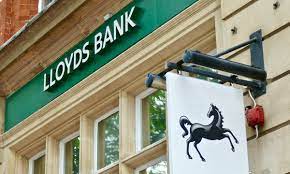The largest domestic lender in Britain, Lloyds Banking Group, contacted 2 million of its 26 million clients in May after determining that some of them could want further assistance to deal with skyrocketing food and energy expenses as well as mounting loans costs.
The largest mortgage lender in the UK gave consumers choices they might find themselves in the crosshairs of a rising cost of living issue, including debt consolidation, household budget assessments, and spending management tools, a representative told reporters.
When UK inflation reached a 40-year high, Lloyds reached out to 1 in 13 of its customers and account holders via phone, email, and text messages. This outreach provides insight into how banks are attempting to address financial problems before they go out of control.
Lloyds stated that it was unable to disclose a number for June and added that it routinely contacted many potentially vulnerable customers.
As part of a coordinated effort by lenders, regulators, and the government to request forbearance during the COVID-19 pandemic, Lloyds set up debt repayment breaks for 1.3 million borrowers.
Given the bank’s status as a leading indicator of the UK economy, authorities may be alarmed by Lloyds’ decision to prepare for a slowdown.
The question of when and how this crisis may affect asset quality must worry all institutions. If you had no such worries, why would you approach 2 million consumers in this manner? “According to Roger Gewolb, the leader of the advocacy group Campaign for Fair Finance, banks should increase their efforts to ensure that new borrowing is affordable.
Lenders needed to increase capital buffers to better withstand the storm, the Bank of England cautioned last week as the economic outlook for Britain and the rest of the world had worsened.
Banks have claimed thus far that there are currently minimal indications of stress in loan books. Credit Suisse analysts predicted that Lloyds will disclose loan loss provisions for the second quarter of 170 million pounds, or roughly flat with the prior quarter.
Although half of its members saw an increase in their balances due to the pandemic, Lloyds CEO Charlie Nunn told the BBC last week that the majority of its customers had less than 500 pounds in savings, potentially leaving them vulnerable to financial shocks.
The bank decided to give a one-time payment of £1000 to the majority of its employees last month out of concern for the growing cost of living.
The cost of living is now the second most frequently mentioned reason, according to charity StepChange, which reported a 12 percent month-over-month increase in new customers seeking debt help to 14,000 in May.
According to research released this week by the University of Bristol and the abrdn Financial Fairness Trust, one in six households in Britain are experiencing “severe financial challenges,” up from one in ten in October.
The New Economics Foundation economist Lukasz Krebel said he supported lenders’ efforts to help borrowers restructure their debts or avoid unforeseen fees, but that such assistance would only be helpful “at the edge.”
For people and families whose real wages have fallen below what they require for basic requirements, he said, “better budgeting gives just an illusory answer?”

















